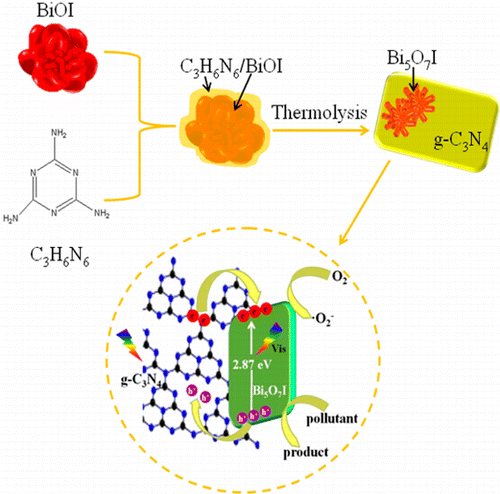
We developed for the first time an in situ co-crystallization route for fabrication of a heterojunctional photocatalyst g-C3N4/Bi5O7I by adopting melamine and BiOI as coprecursors. This synthetic method enables intimate interfacial interaction with chemical bonding between g-C3N4 and Bi5O7I, which is beneficial for charge transfer at the interface. The photocatalysis properties of g-C3N4/Bi5O7I composites were studied by photodegradation of Rhodamine B (RhB) and phenol and generation of transient photocurrent with illumination of visible-light (λ > 420 nm), The results revealed that the g-C3N4/Bi5O7I composite shows enhanced photocatalytic reactivity compared to the pristine g-C3N4 and Bi5O7I samples. Investigations on the behaviors of charge carriers via electrochemical impedance spectra (EIS) and photoluminescence (PL) spectra suggests that the g-C3N4/Bi5O7I heterojunctional structure constructed of the in situ co-thermolysis approach is responsible for the efficient separation and transfer of photogenerated electrons (e–) and holes (h+), thus giving rise to the higher photocatalytic activity. The present work opens a new avenue for manipulation of high-performance semiconductor heterojunction for photocatalytic and photoelectrochemical application. J. Phys. Chem. C, 2015 |

